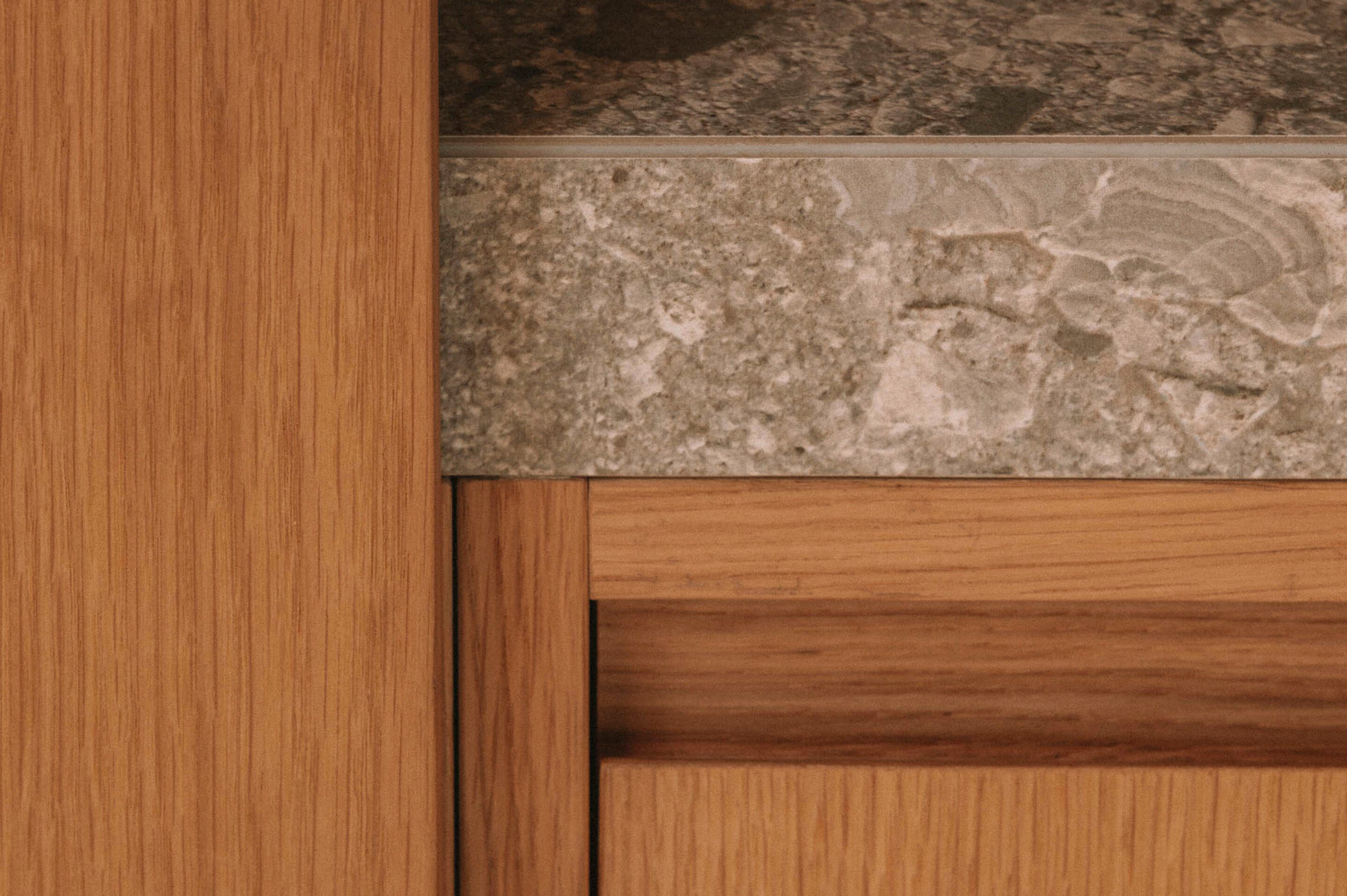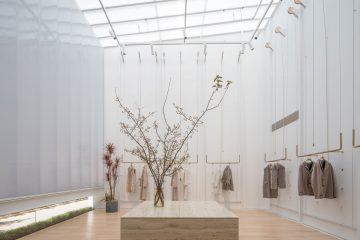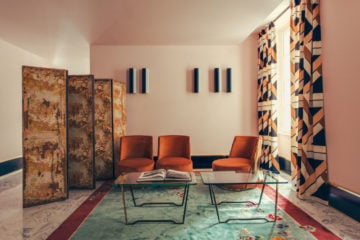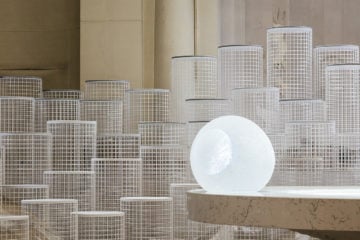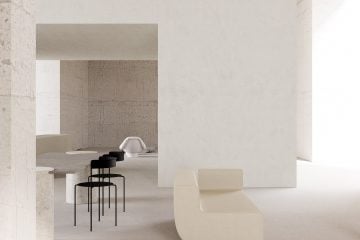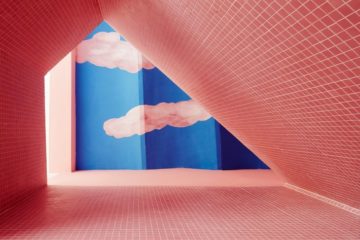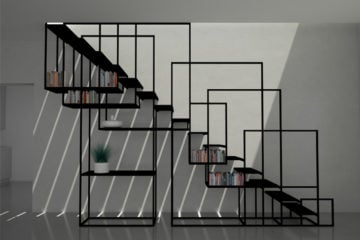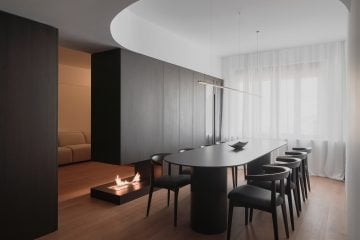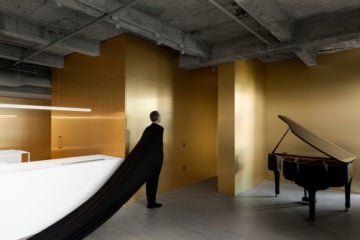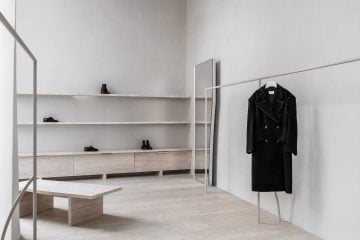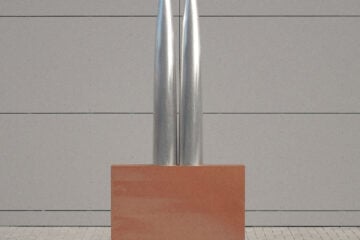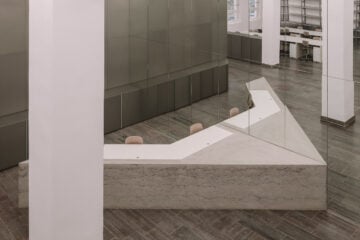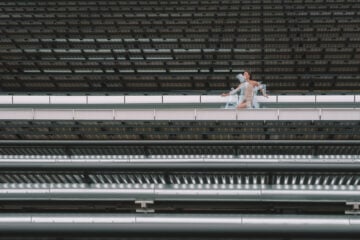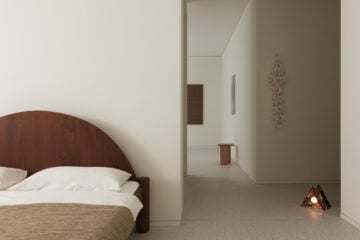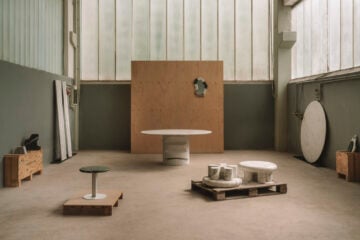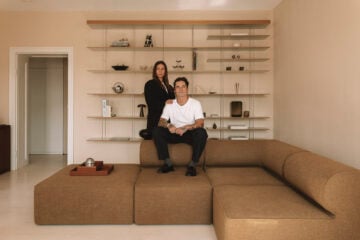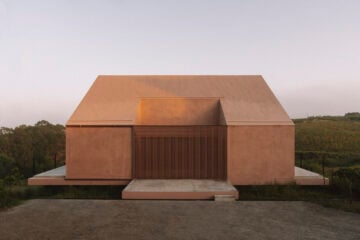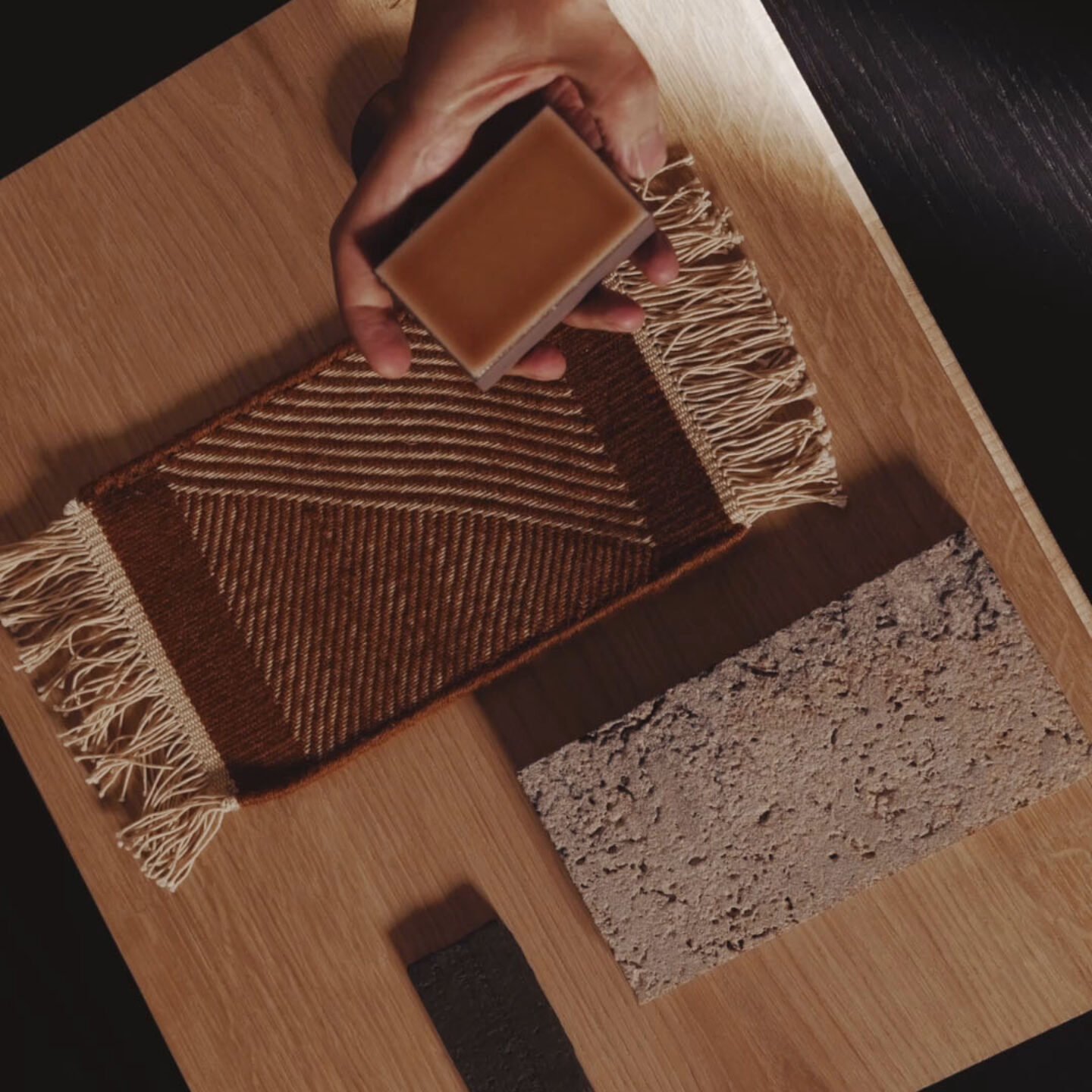
Studio Mara: Architecture of Subtraction
- Name
- Studio Mara
- Images
- Clemens Poloczek
- Words
- Anna Dorothea Ker
To decode the warm minimalism of Berlin architecture practice Studio Mara reveals a reverence for the natural, the raw and the nuanced. Yet it’s what the duo’s spaces leave out that defines their subtle atmospheres – something felt more than seen. Whether rehabilitating Berlin lofts carved up by misguided ‘90s renovations the or unfurling a hunched Majorcan finca towards an ocean view, the architecture of Mirjam Danke and Olaf Schulz is a practice of subtraction. In an exclusive editorial feature, the partners in life and work invited Ignant into their new workspace at Glint in Berlin-Mitte, whose gentle essentialism exudes a powerful presence.
Amid Berlin’s rapidly evolving urban fabric, the area around Stadtmitte stands as a stoic outlier. Characterized by its graphic, stone-clad blocks housing embassies, offices, and government buildings, the district exudes a somewhat austere presence. Yet, for the observant, its edges and corners quietly reveal its secrets: ornate details behind tall glass doors, and lush inner courtyards filled with topiary.
On a nondescript street, away from the main thoroughfare, lies an ensemble of heritage-protected Wilhelmine-era buildings, recently restored and expanded under the banner of Glint Berlin. Crowning the buildings, which appear as one continuous façade, is an unusual feature: a small, slate-roofed tower with a glassy geometric form. Down below on the ground floor, discreet white lettering on a ground-floor window reveals the occupants of an 80m² space: Studio Mara.
Founded by Mirjam Danke and Olaf Schulz in 2014 in their Charlottenburg home studio, Studio Mara’s expanding practice and post-pandemic desire to engage more directly with clients led them to seek a new premises. They needed a place to not only meet with clients and collaborators but also one that would embody their architectural philosophy – a methodical, artful process of subtraction, allowing spaces to breathe by stripping them back to their essence.
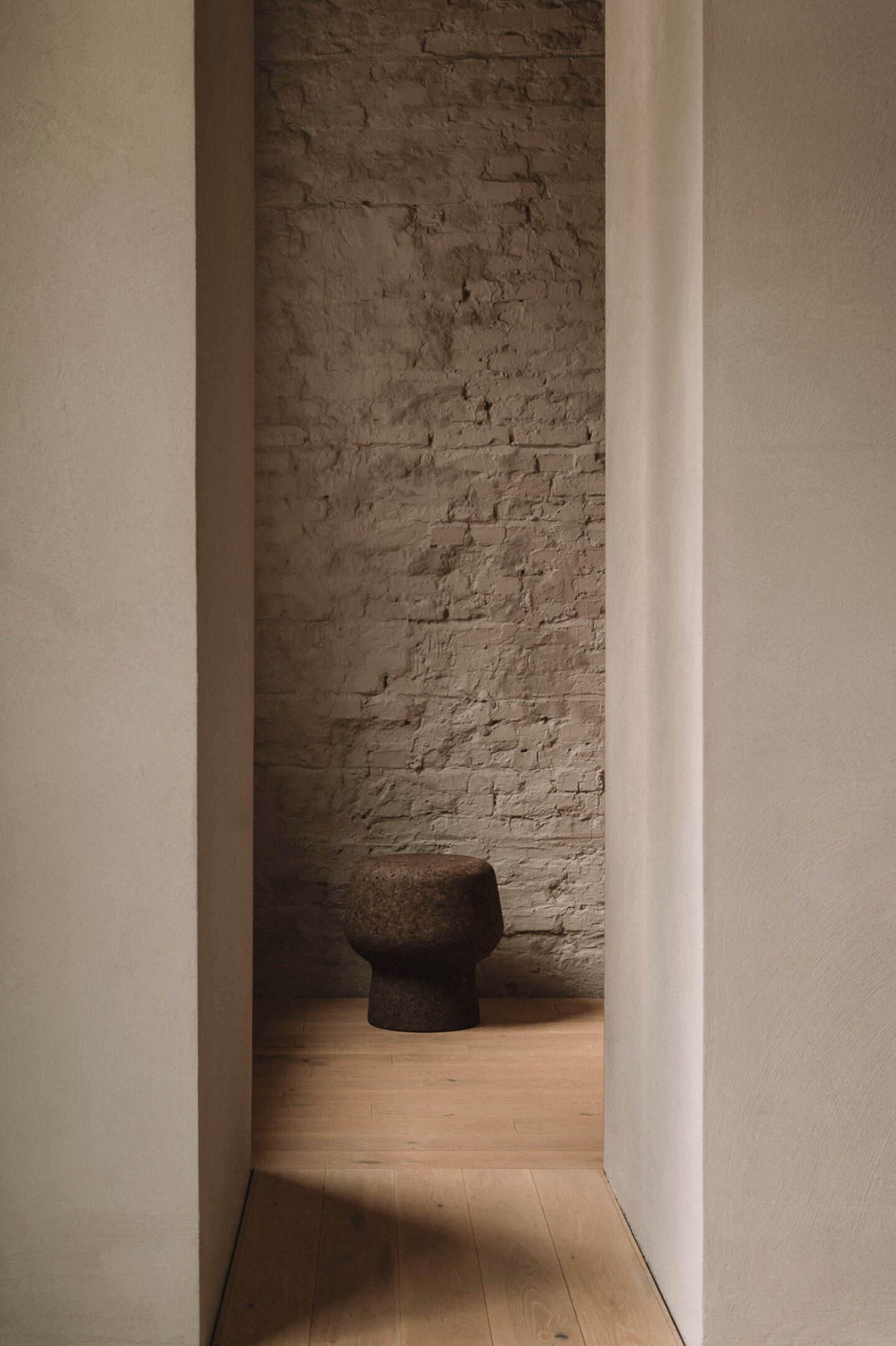
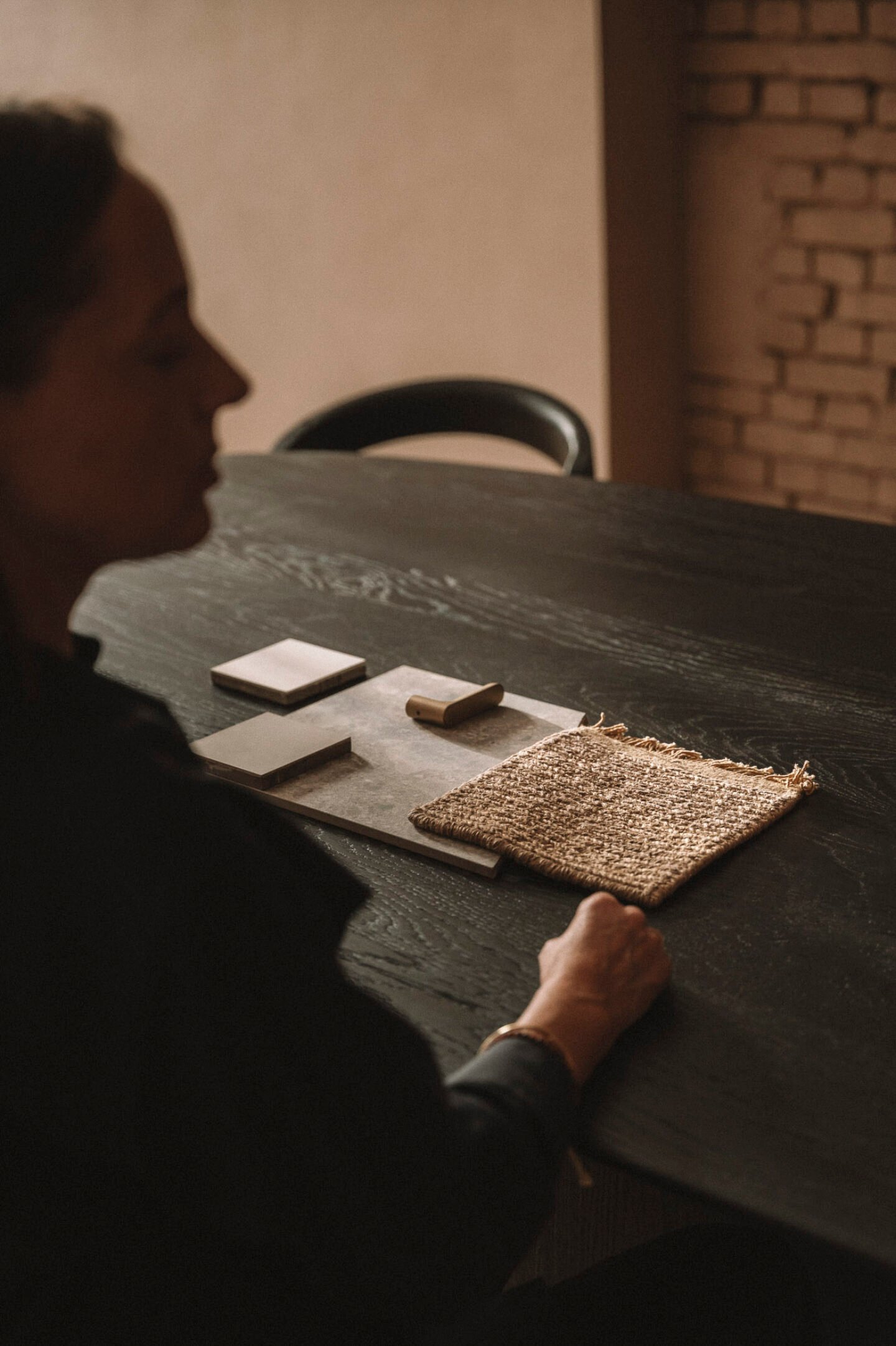
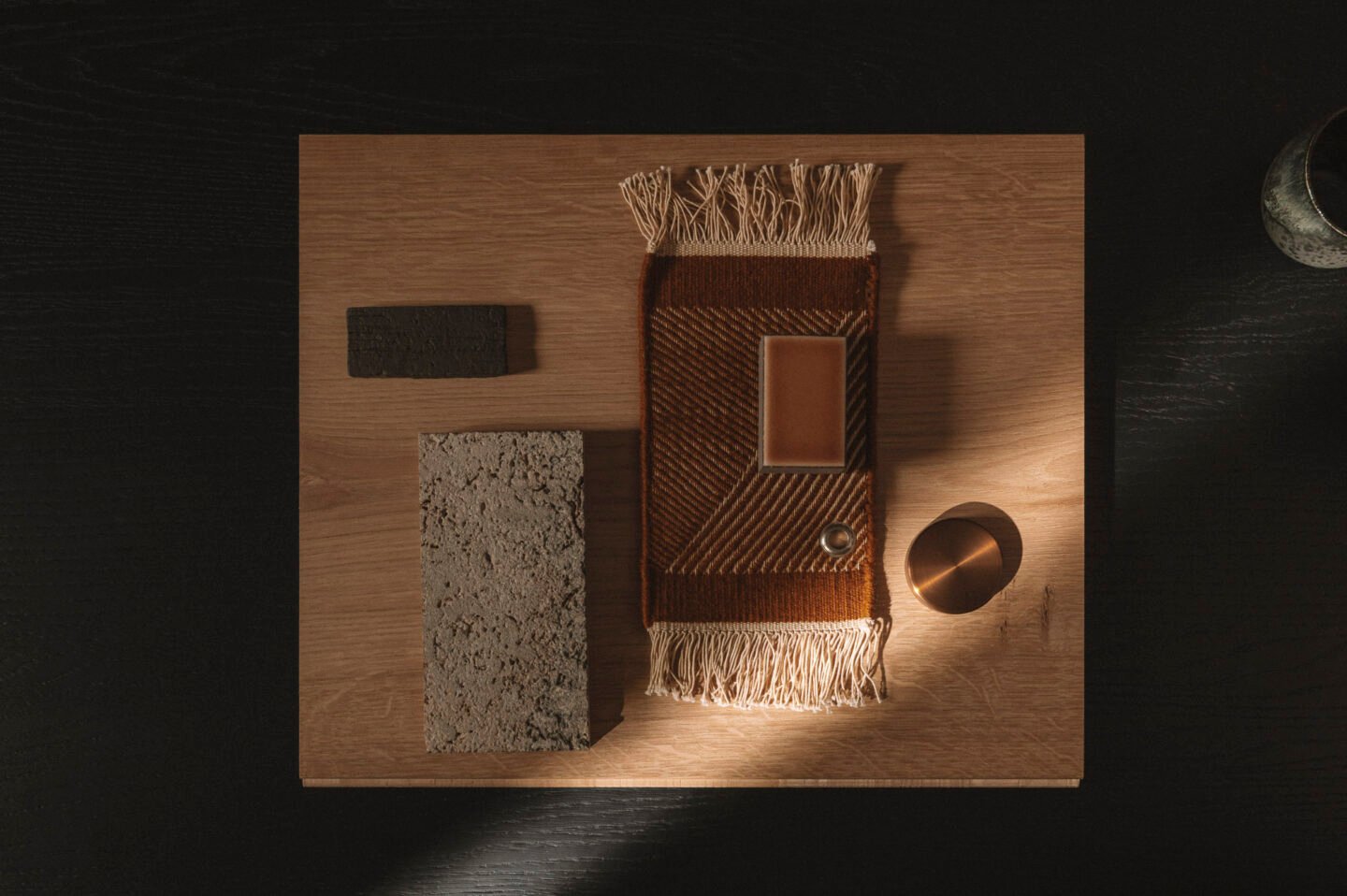
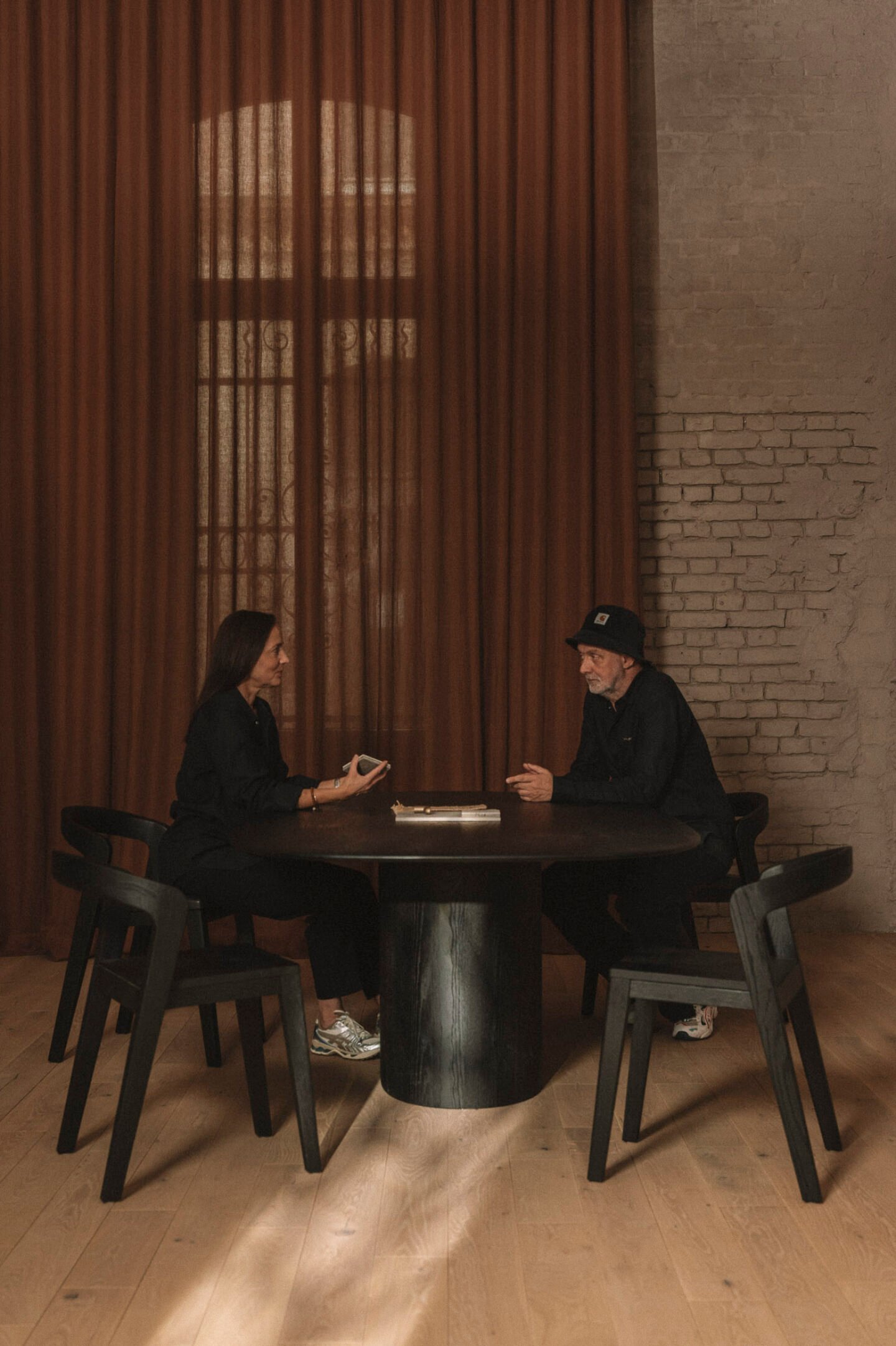
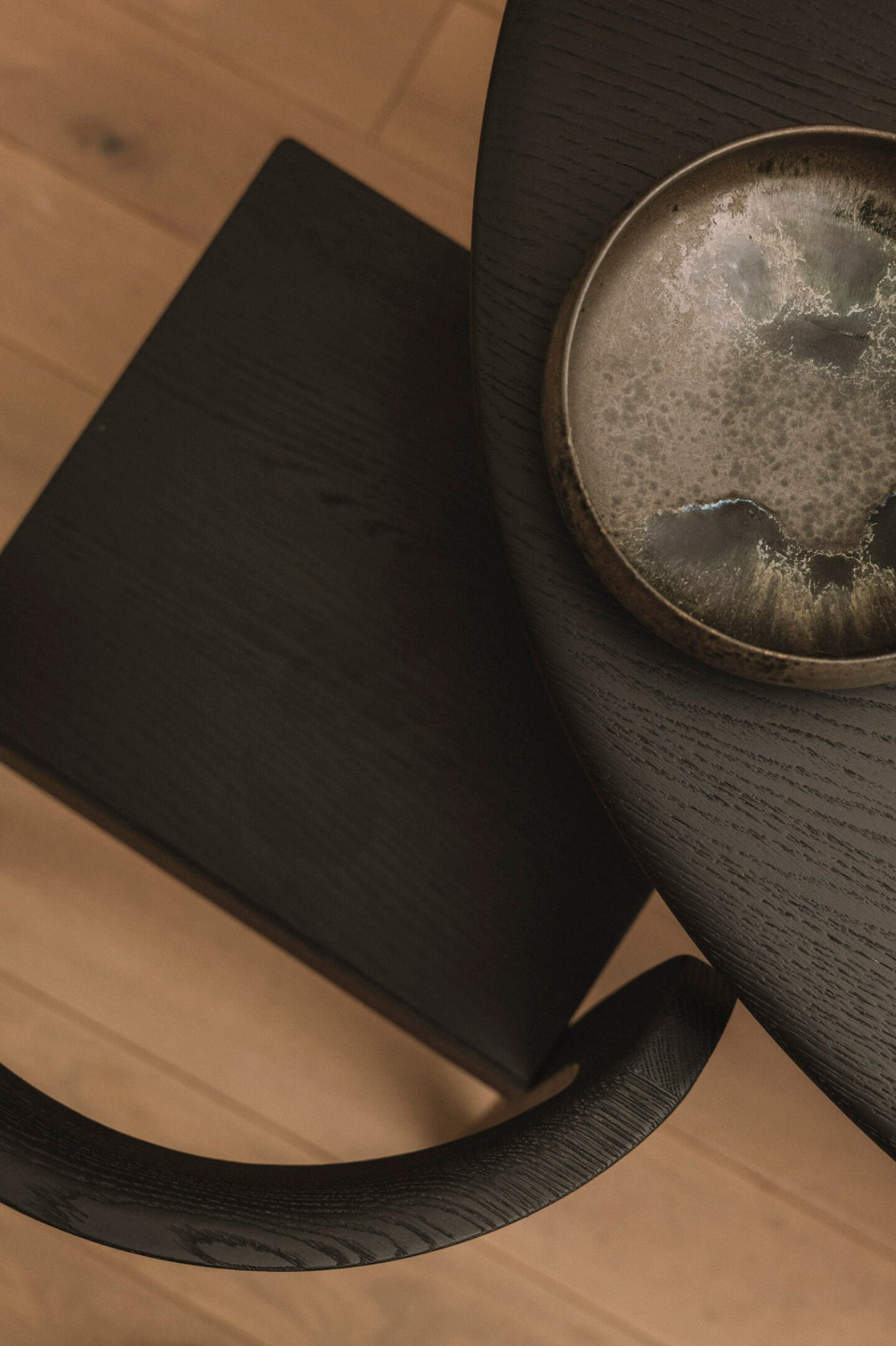
“In this old building with its rich history, our task was to enhance what was already here.”
When the opportunity arose to take over the Glint space, their approach came naturally. “This is old Berlin – it feels like a time warp. We’re sitting in the middle of history,” Olaf says. They quickly agreed that preserving “what time makes visible – every intervention, every trace of wear” was essential, as Mirjam explains. “We had to respect the history reflected in the facades and surfaces.”
Olaf elaborates on their philosophy: “In this old building, with its rich history, our task was to enhance what was already here. The only things we needed to cover were the functional areas like the kitchen, bathroom, and utility lines. Everything else – the brickwork, the open structures, the raw concrete ceiling – we left exposed. We just applied a thin lime wash to the bricks – not pigmented, just natural, like the earth itself.”
Throughout the space, subtle interventions create a seamless harmony, as though it could never have been otherwise. The duo embraced the natural tones present in the space. “We asked ourselves, what do we keep? The old bricks had this reddish-brown hue, and the ceiling, with its concrete, showed different nuances. We wanted to bring those qualities to the walls,” Mirjam explains. Window frames, door handles, and sockets were kept tone-on-tone, preserving the clarity of the space. “To give the room a certain grandeur, you just have to look closely,” Olaf adds. “The colors are already there, in the ceiling, in the bricks. That reddish-brown – that’s the essence.”
The softly textured walls, reaching nearly five meters high in Le Corbusier’s Ombre Naturelle Claire frame two levels of natural oak parquet flooring. A shallow step creates “a stage, an elevation that adds depth to the room,” as Mirjam notes. In the front, a relaxed meeting space with a Reuber Henning rug and Van Rossum armchairs is bathed in crisp daylight, while the back is reserved for the office area, centered around a generous table and understated Van Rossum chairs. “All the furniture is black, because we didn’t want it to feel like a showroom,” she adds. “It should fade into the background, so the focus remains on the space itself.”
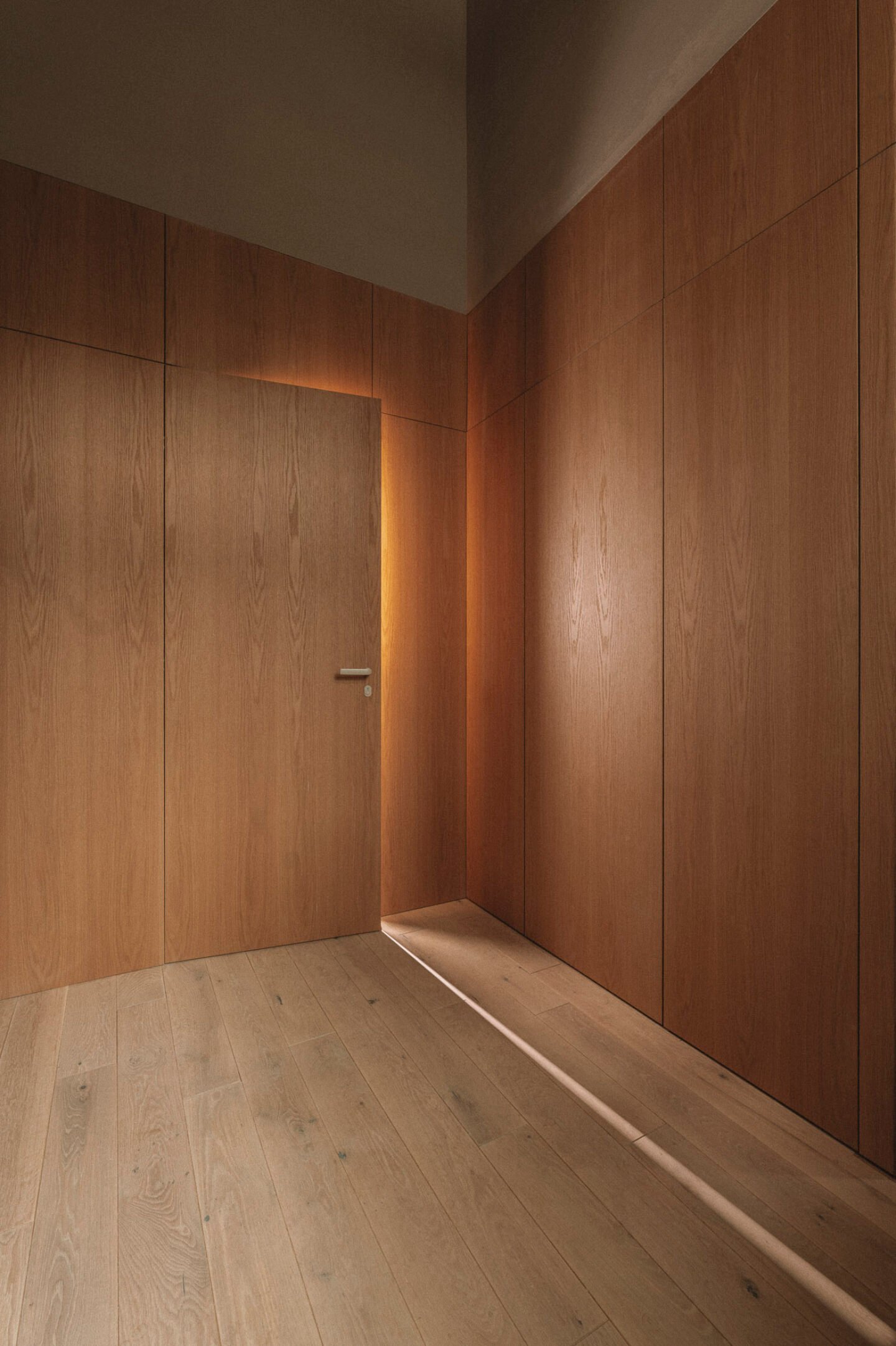
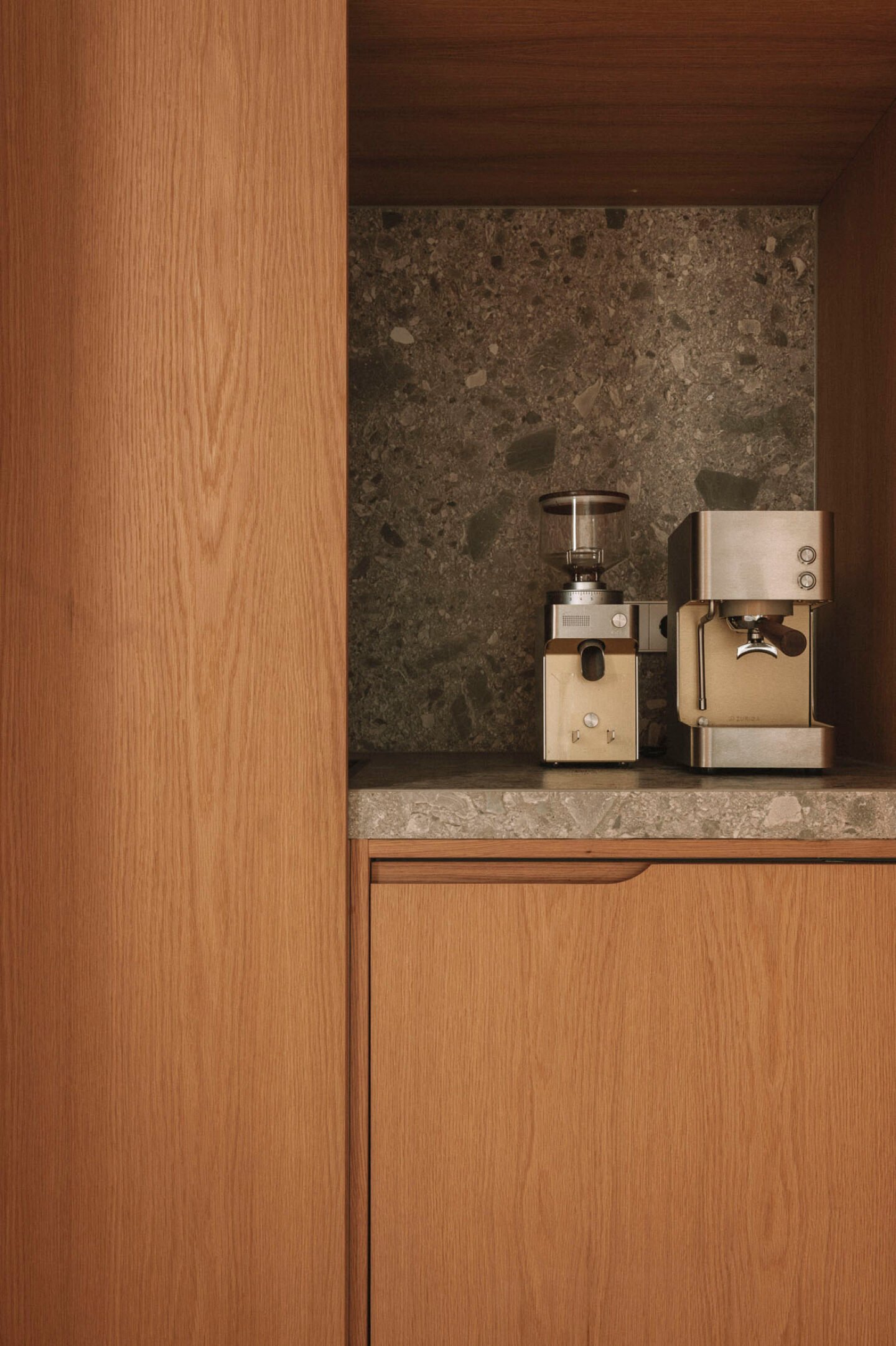
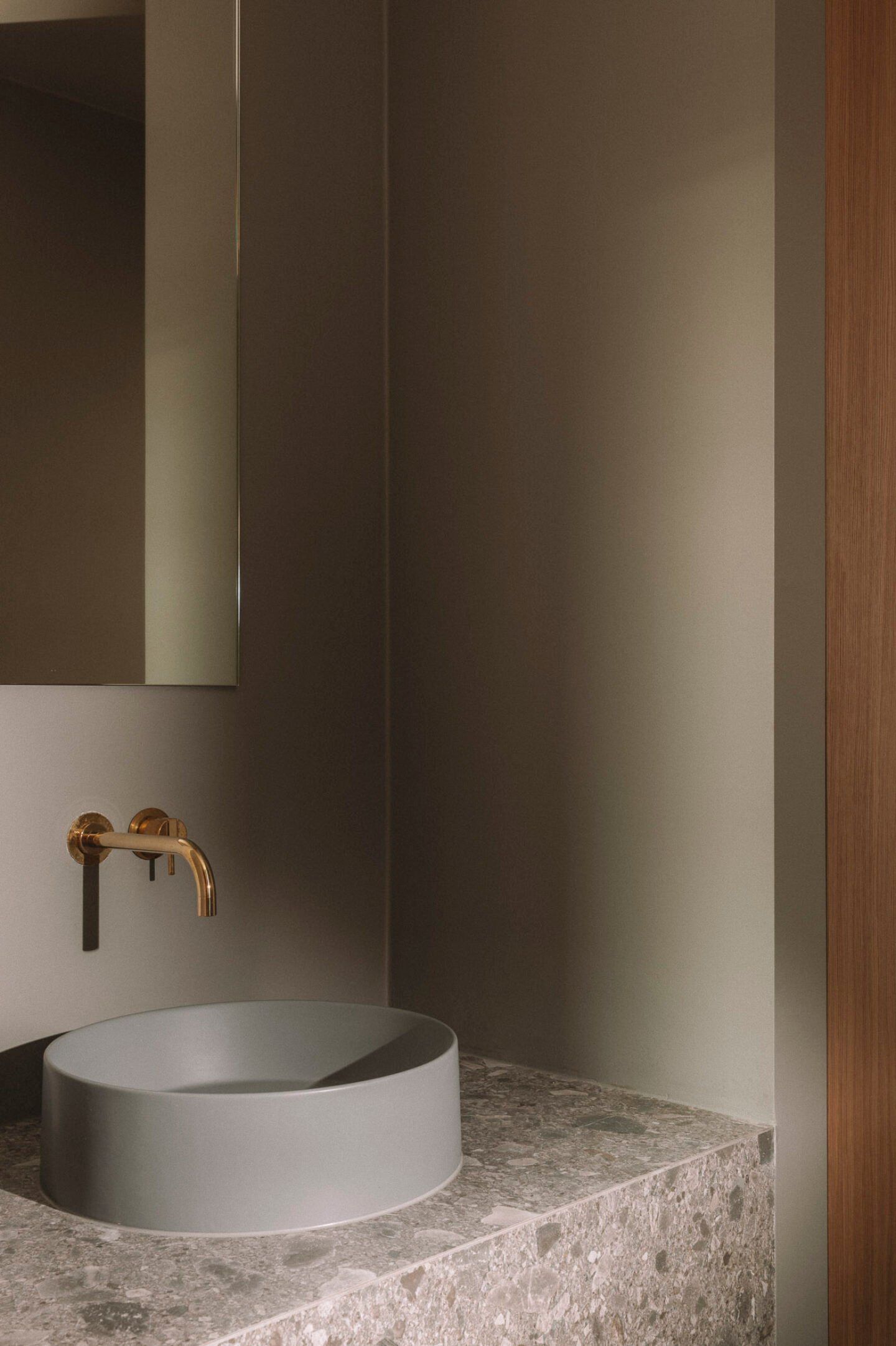
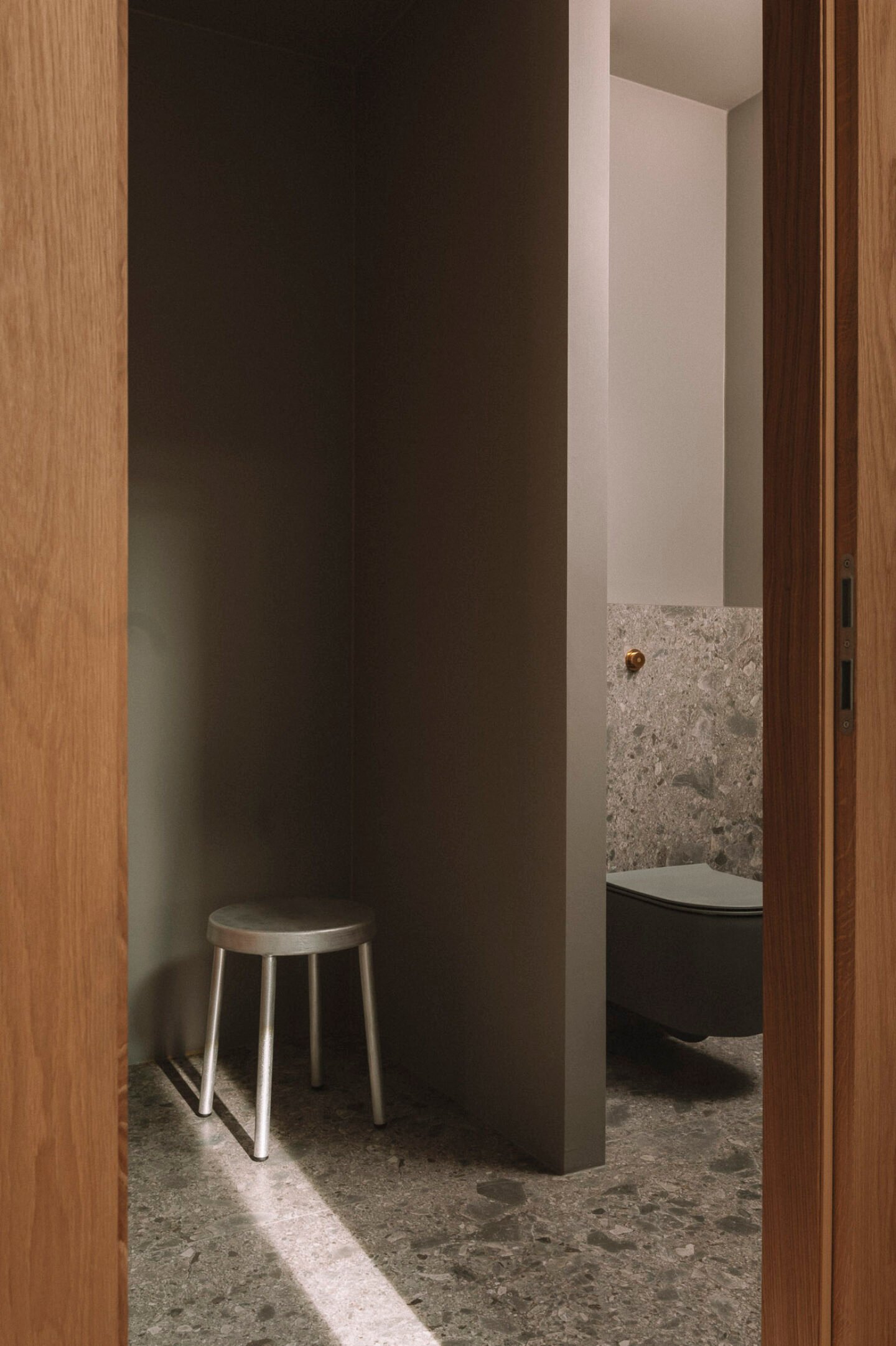
The step, though subtle, was highly practical: concealing pipes that allowed for the kitchen and bathroom to be discreetly tucked away to the left of the office. A Børge Mogensen for Carl Hansen & Søn table bench with a cream woven seat leads to the sleek, dark kitchen, custom-made by Julien Budnik and Ricarda Lorenz of Handwerk Designs. The compact kitchen opens to reveal essential functions, with a sculptural stainless steel Zuriga espresso machine gleaming in the corner.
With its lofty concrete ceiling, nuanced palette, natural materials and anti-furnishing approach, Studio Mara’s space feels more monument than office; imbued with an atmosphere bordering on the sacred. In its concept, realization and manifestation, it serves as a microcosm for their practice at large. “Our working method becomes clear right away,” Mirjam notes. “People get to see firsthand how we work, how we shape spaces for them.”
Shaping spaces was a formative theme of Mirjam and Olaf’s lives, long before they met and started working together. “Art and architecture were always dominant in my family,” Mirjam says. “My parents and grandparents were all, in some way, involved in architecture or art. My grandfather was a sculptor, my father an architect, my mother a goldsmith, and my grandmother a dancer. For me, it was just normal to be around those things. It wasn’t until I started my training as a draftsperson, and later my studies, that I really became consciously involved in architectural practice, and developed a deeper connection to it.” After apprenticing in a large firm, she moved to Berlin and gained experience in several of the city’s boutique offices.
Meanwhile, Olaf was following his own trajectory catalyzed from the inside out. Enjoying reimagining spaces as a teenager, he pursued a “very traditional,” interior decoration apprenticeship as an interior decorator connected to a furniture store in Karlsruhe. It involved consulting on soft furnishings – curtains, fabric, upholstery. Drawn to furniture pieces by the likes of Eames, Marcel Breuer, Corbusier – “what we now call the classics” – he began studying architecture, first in Kaiserslautern and shortly after in Basel, where he found his stride between the Swiss Modernist tradition and the open pedagogical style he’d been missing in Germany. “We had a sort of Bauhaus approach,” he recalls. “We worked in a large studio upstairs and had workshops downstairs – metalwork, woodwork – just like in the Bauhaus era. We built models and tried to make things happen.”
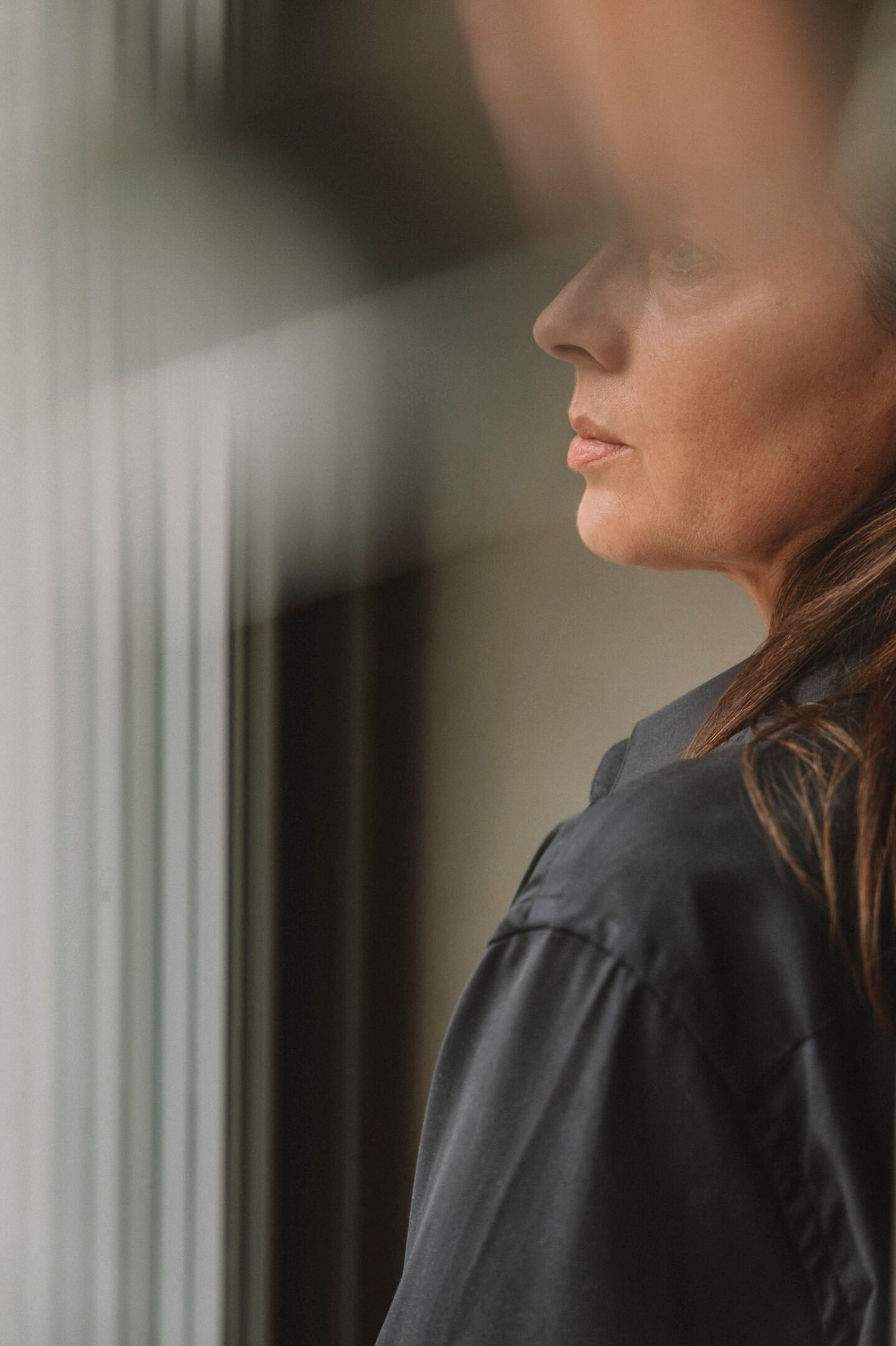
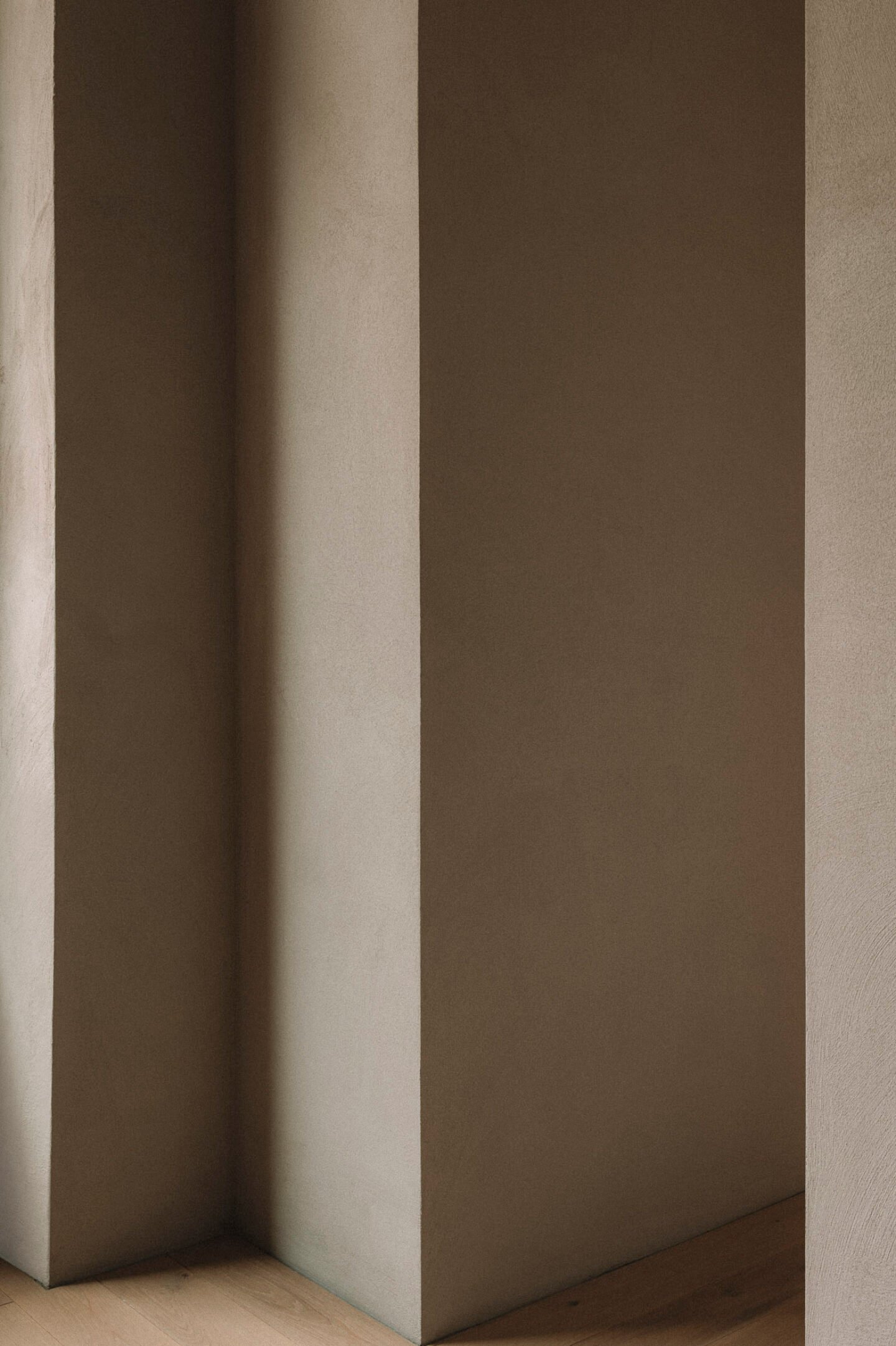
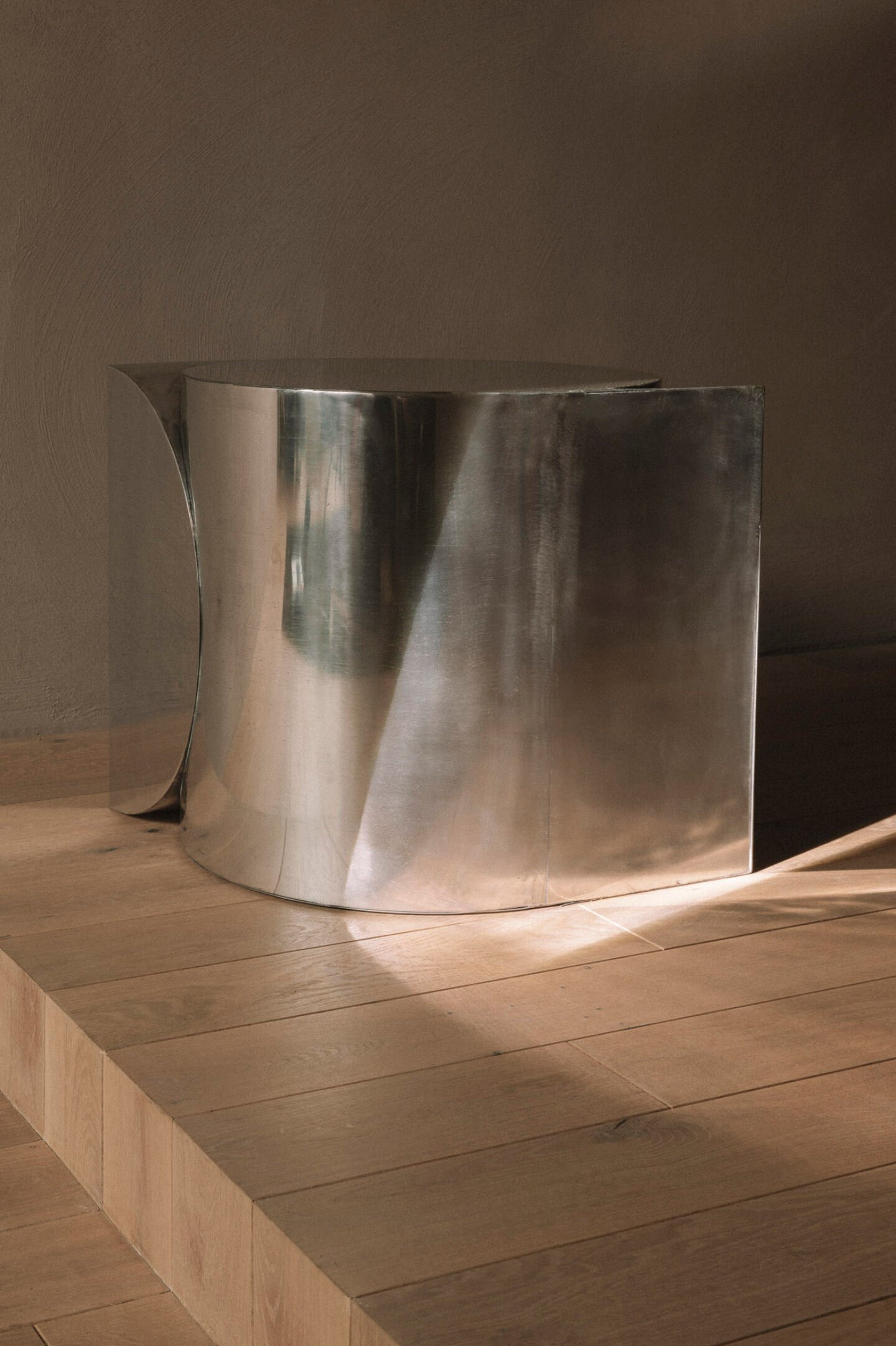
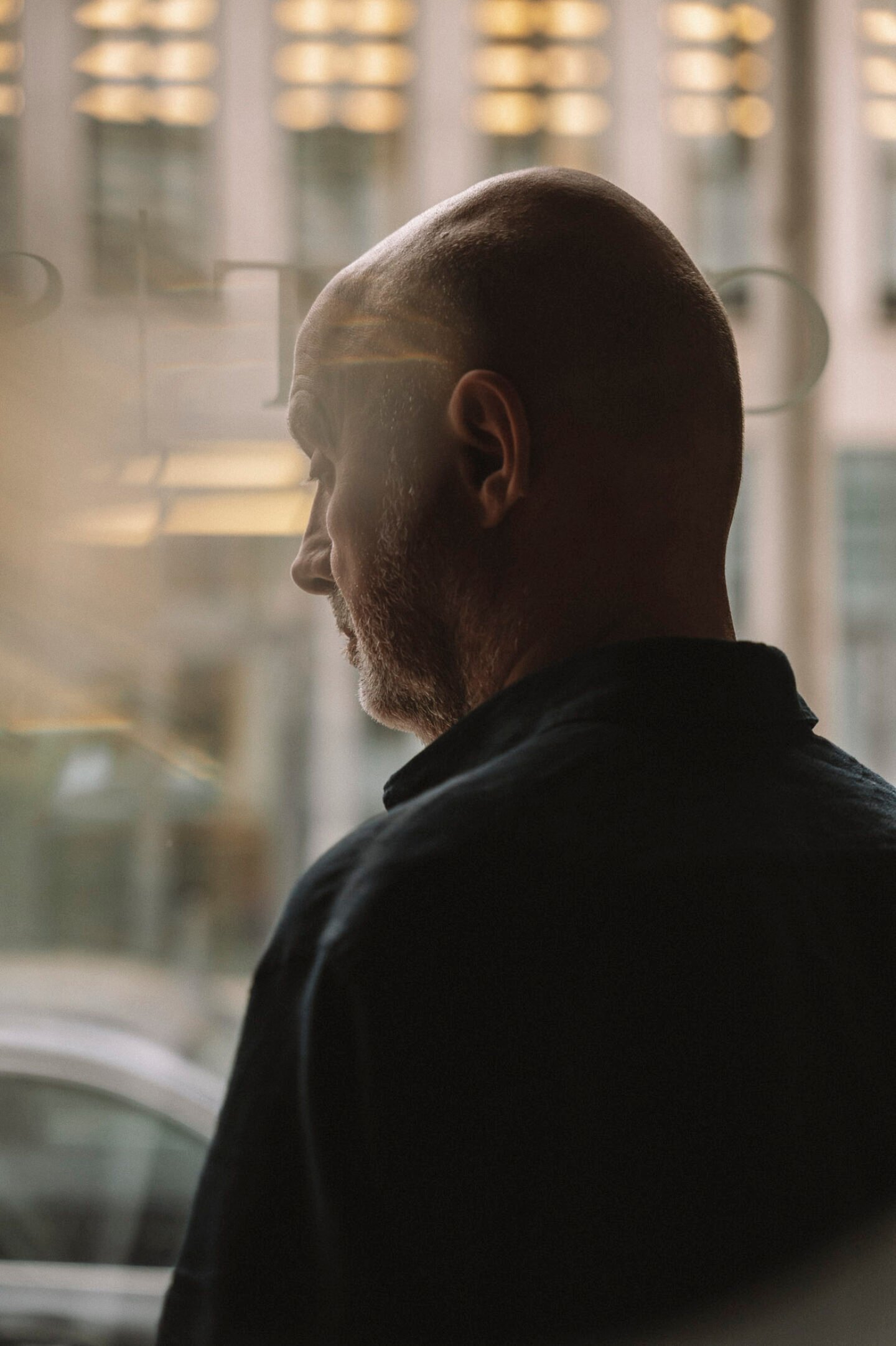
It was in Dessau that the pair met, while Mirjam was studying at the Bauhaus University there, and Olaf was working at the Academy after his studies. “This was shortly after reunification, and the campus was incredibly small,” Mirjam says. “It felt like an island in the middle of the East German town of Dessau. So you got to know people pretty quickly,” she laughs wryly. From there on, it was a natural evolution towards working together. “We eventually said, ‘Let’s combine the things we each work on daily,’” Mirjam says. In 2014, they founded their practice under the banner of Mara Archiktekten. Since then, their union has known no distinction between work and life. “There’s really no separation between the personal and the professional. It all flows together, because our work is a part of our private life,” says Mirjam. “We bring it into our relationship, and it’s part of what connects us.”
“We start by negating everything else to achieve clarity – in the space and in our minds, so we can begin again.”
The pair sees eye to eye with decisive clarity. Many of their projects involve triaging inner-city apartments or holiday houses on islands that have been chopped up into small, poky spaces with their original features plastered over. Their method is one of undoing. A typical Studio Mara floor plan does away with all non-structural walls, and starts over. “Basically, it’s like resetting everything to zero to have the freedom to think and plan anew. It’s like clearing everything out and then starting over from scratch, looking at the space purely in terms of its structure. So, what does the space need in order to be a space?” Mirjam says. “We start by negating everything else to achieve clarity – in the space and in our minds, so we can begin again.”
Once the floor plan is recalibrated and the original spirit of the place discerned – history, location, materials, light sources, view, unique details – it can slowly be sculpted again, its living areas defined while remaining connected to the greater whole. Their preferred technique to achieve this takes the form of a deceptively simple cube structure that serves as a room divider, storage space, lounging or sleeping cubby, or whatever functions need fulfilling. Olaf cites his training in Basel as the cube’s inspiration. “I was always fascinated by how the Swiss combine functions into a single unit, like a box – the bathroom, the kitchen – and then around that, there’s the flexibility to branch off into other functions,” he notes. “What we see is that it’s not about perfecting the floor plan, but about how the outer historical shell creates a space, providing room to arrange functions.”
With the floor plan creating newfound space to breathe, a rich, natural materiality that respects the space’s history and present context can come to the fore. That might look like naturally finished oak flooring, unpigmented lime wash on the walls, and generous linen curtains. “It’s really about bringing a sense of warmth and softness that makes people feel comfortable,” Mirjam notes. “Everything should be a sensory experience.” When dusk falls, natural light gives way to finely calibrated scenography of projected light. Lighting design studio PSLab is a regular collaborator.
They’re just one of a close coterie of trusted partners and collaborators that has formed around the studio over the years. Designs of the Time and Reuber Henning cater to curtains and rugs respectively, COCO-MAT to natural mattresses, and Van Rossum and Carl Hansen & Søn to furniture in many of their spaces. FSB is a firm favorite for door handles and other fixtures. “It’s important for us to understand the background behind the brands we work with. It’s the stories behind these brands that we find fascinating,” notes Olaf. The same can be said for the image makers who document their realizations: photographers Simon Menges – known for his strict, precise image-making and Ana Santl Anderson, for her warm, evocative documentation of atmosphere.
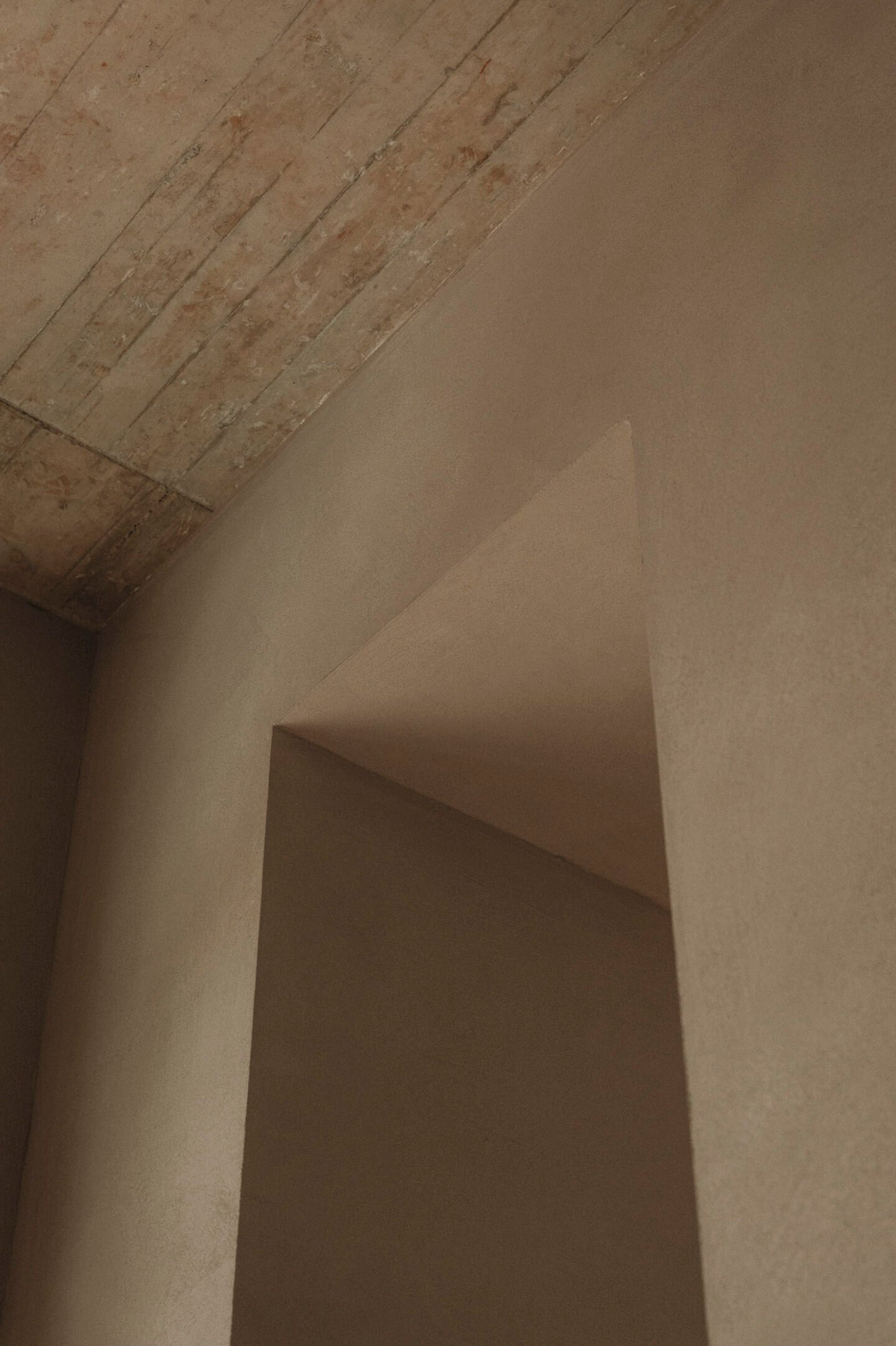
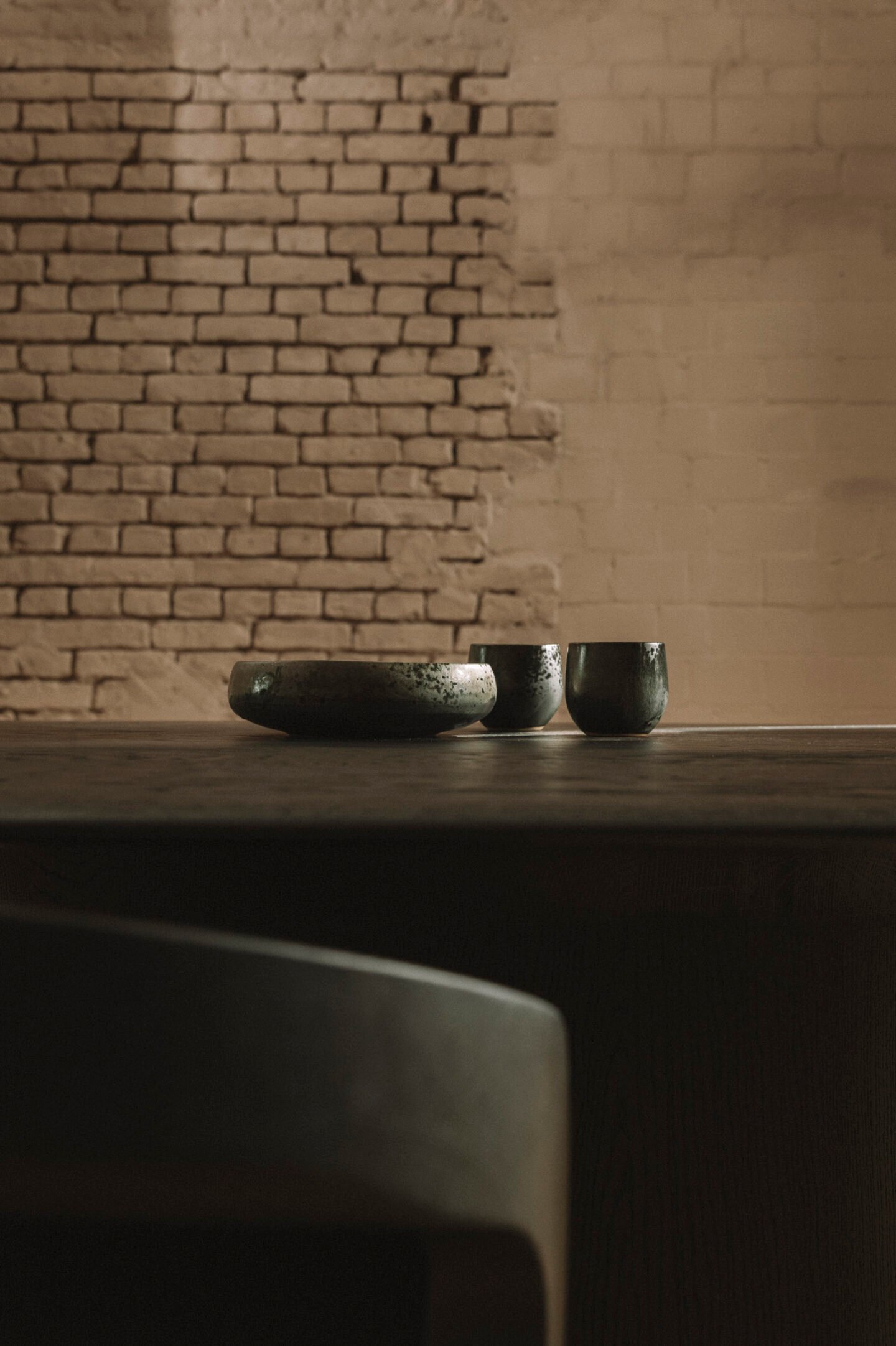
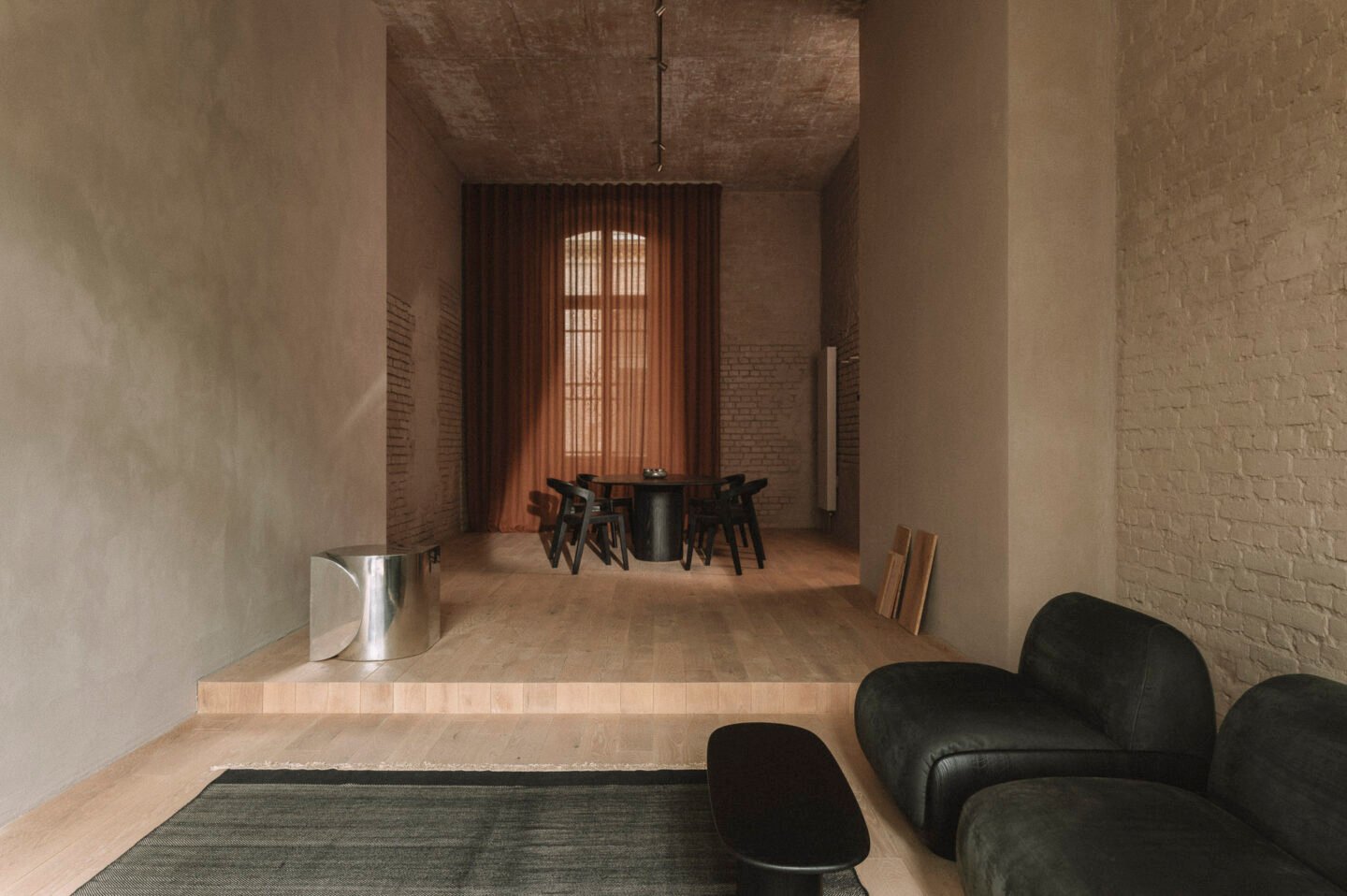
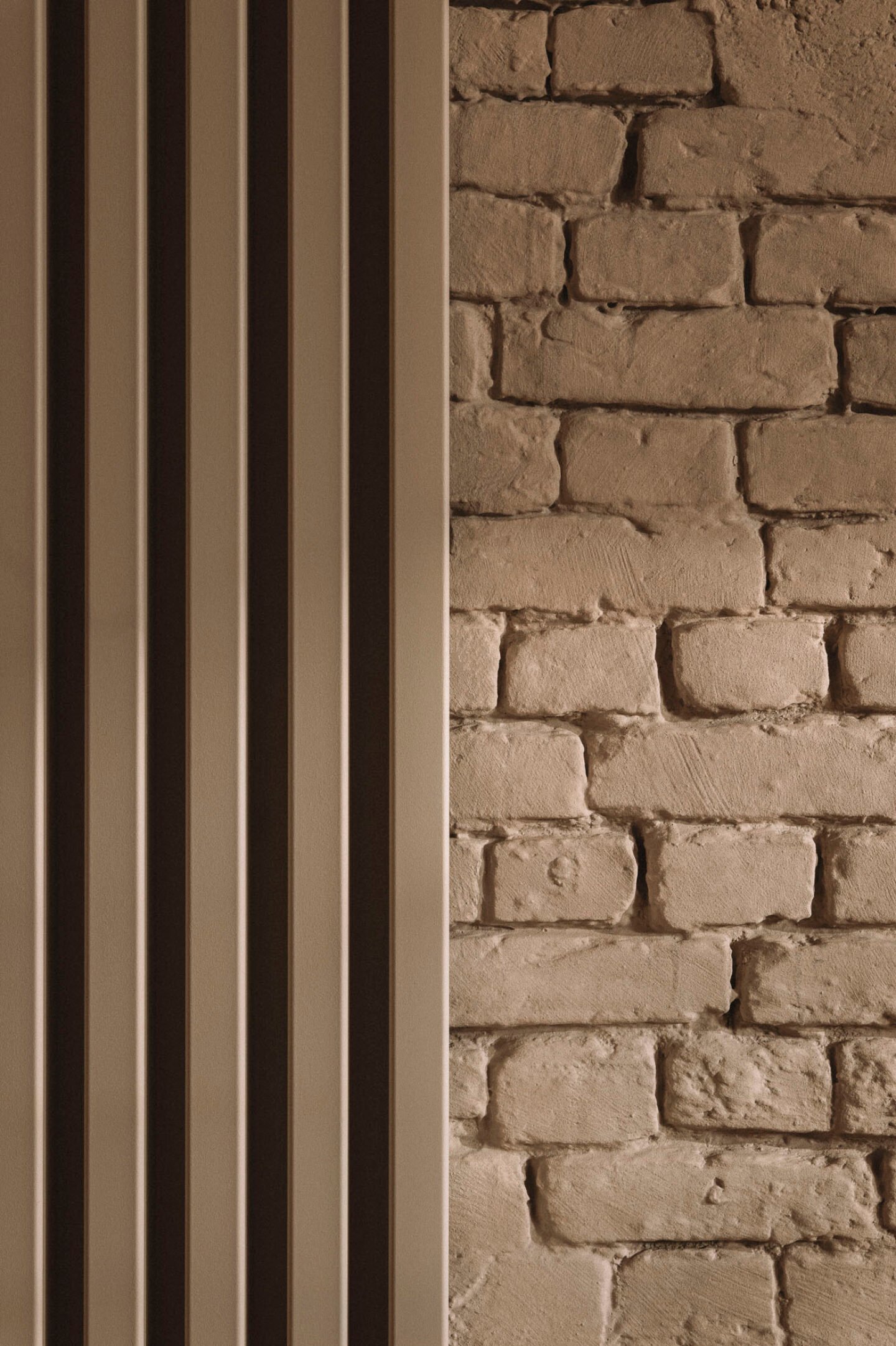
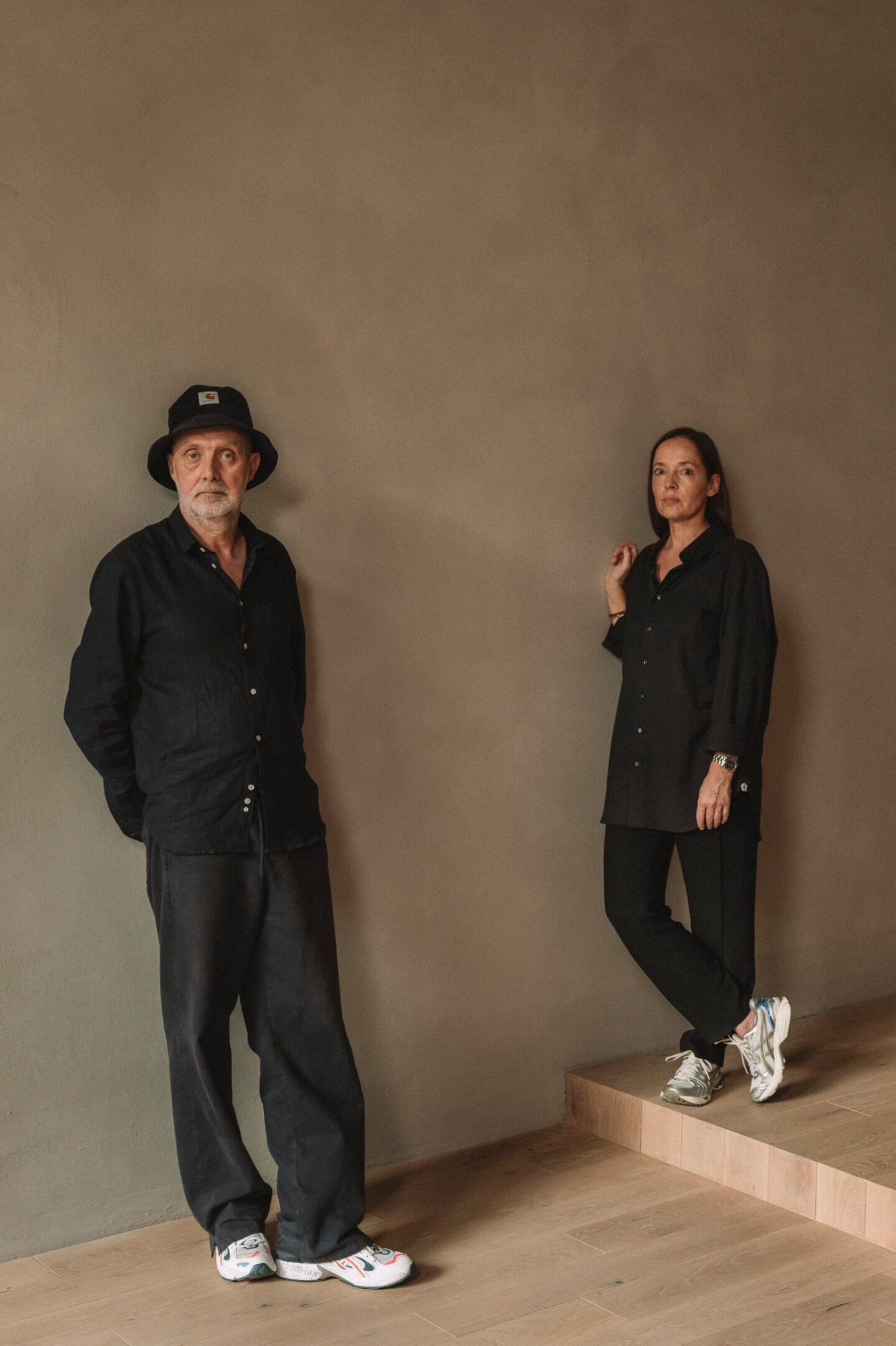
The Studio Mara portfolio segments neatly into two contrasting contexts: in the city and by the sea. City-side, they’ve transformed a couple of former factory floors in Berlin Prenzlauer-Berg into homes for a young family and a couple, and brought new clarity to a ‘90s townhouse in Cologne. Briefs situated on islands seem to have a pull. Two modest holiday apartments on the North Sea island of Amrum bring the windswept, moody seascape of their surroundings into the interior textures and tones through sandy tones, weathered wood and linen curtains that modulate the dramatic light, enabling a toggling between exposure to the elements and an intimate sense of enclosure.
In 2023, Studio Mara took on restoring a traditional finca on Majorca’s northwest coast. Its fragmented floor plan blocked the light and the view, requiring a breaking open towards the panoramic sea view. “Location is so crucial to our work,” says Olaf. “In Majorca, there’s the Mediterranean climate, the sun – of course, but then there are also the materials used in the outdoor spaces, the old historical walls, and the kinds of plaster applied to the facades. These are essential elements to consider for the project. It’s the same with Amrum – the sand, the sea, the colors. We can’t separate these things. We feel compelled to take in our surroundings and ask, what is this place offering us? What context are we working in?”
When the question of their ideal context to build within is reflected back to them, the answer is situated in another context altogether: on the land, between fields and forest. They’d like to build a small house for themselves there. Perhaps at first as a holiday home, then somewhere they can gradually spend more time in. A place that takes cues from its surroundings, and welcomes them inside, in palettes and compositions and sightlines that in their quiet clarity speak volumes, reminding that the ordinary and extraordinary are one and the same.
Images © Clemens Poloczek | Text: Anna Dorothea Ker
